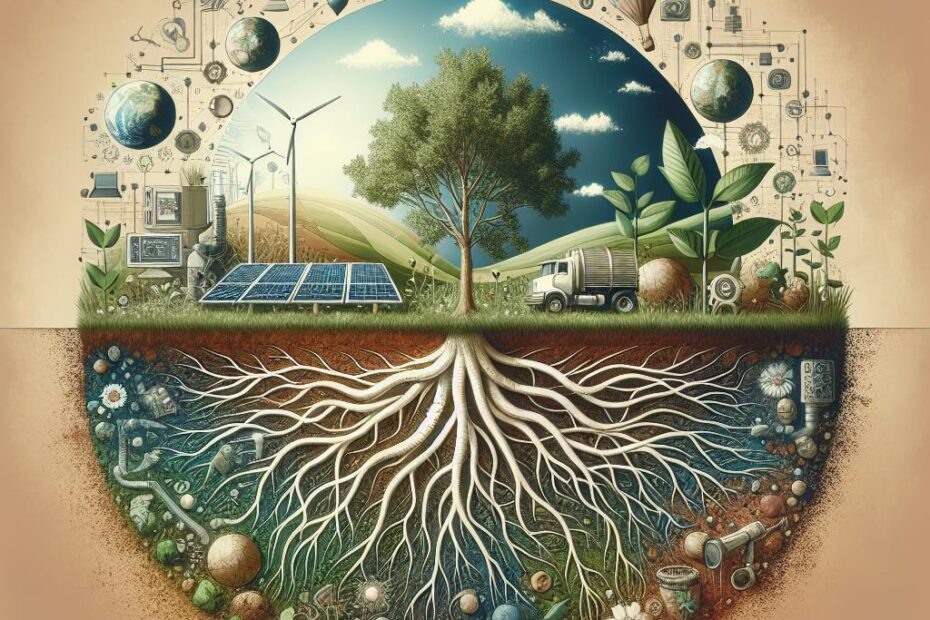Plants Help Erosion: The Natural Solution
Erosion is a common problem that affects many landscapes around the world. It occurs when soil is washed away by water, wind, or other environmental factors, leaving behind barren patches of land that are vulnerable to further damage. Fortunately, there is a natural solution to combat erosion – plants. In this article, we will explore how plants help prevent erosion, the benefits of using plants for erosion control, and practical tips for implementing plant-based erosion control strategies.
How Plants Help Erosion
Plants play a crucial role in preventing erosion by stabilizing the soil and reducing the impact of erosive forces. Here are some ways in which plants help combat erosion:
-
Root Systems: Plant roots help bind the soil together, creating a network of fibers that hold the soil in place. This helps prevent soil from being washed away during heavy rain or wind events.
-
Ground Cover: Plants provide ground cover that helps protect the soil from direct exposure to erosive forces. The leaves and stems of plants help absorb the impact of raindrops and reduce runoff.
-
Absorption of Water: Plants absorb water through their roots, which helps reduce the amount of water that runs off the surface of the soil. This, in turn, helps prevent soil erosion.
-
Increased Soil Porosity: Plant roots create channels in the soil, increasing its porosity and allowing water to infiltrate more easily. This reduces runoff and helps prevent erosion.
Benefits of Using Plants for Erosion Control
Using plants for erosion control offers a range of benefits, both for the environment and for landowners. Some of the key benefits include:
-
Natural Solution: Plant-based erosion control is a natural and sustainable solution that does not require the use of chemicals or heavy machinery.
-
Improved Soil Health: Plants help improve soil health by adding organic matter, increasing microbial activity, and reducing compaction.
-
Enhanced Biodiversity: Planting a variety of native plants can help increase biodiversity and create a more resilient ecosystem.
-
Cost-Effective: Plant-based erosion control is often more cost-effective than traditional methods and can be easily implemented on a small scale.
Practical Tips for Using Plants for Erosion Control
If you are looking to combat erosion on your property using plants, here are some practical tips to consider:
-
Select Native Plants: Choose native plants that are well-suited to your local climate and soil conditions. Native plants are more likely to thrive and require less maintenance.
-
Plant in Groups: Plant in groups or clusters to create a more effective barrier against erosion. Avoid planting in straight lines, as this can create channels for water to flow through.
-
Use a Mix of Species: Plant a mix of grasses, shrubs, and trees to create a diverse and resilient ecosystem. Different plant species have varying root depths and growth habits, which can help improve soil stability.
-
Mulch: Mulch around plantings to help retain moisture, suppress weeds, and protect the soil from erosion. Organic mulches such as wood chips or straw are ideal for erosion control.
By following these practical tips and incorporating plants into your erosion control strategy, you can help protect your land from the damaging effects of erosion in a natural and sustainable way.
Case Study: Plant-Based Erosion Control in Action
One example of successful plant-based erosion control is the restoration of a stream bank using native vegetation. By planting a mix of grasses, sedges, and shrubs along the stream bank, erosion was significantly reduced, and habitat for native wildlife was restored. This project demonstrates the effectiveness of using plants to stabilize soil and prevent erosion in a natural and environmentally friendly way.
In conclusion, plants are a natural and effective solution for combating erosion and stabilizing soil. By using plants for erosion control, you can improve soil health, enhance biodiversity, and protect your property from the damaging effects of erosion. Whether you are a homeowner looking to prevent erosion in your backyard or a land manager working on a larger restoration project, planting native vegetation is a practical and sustainable way to protect the land for future generations.
